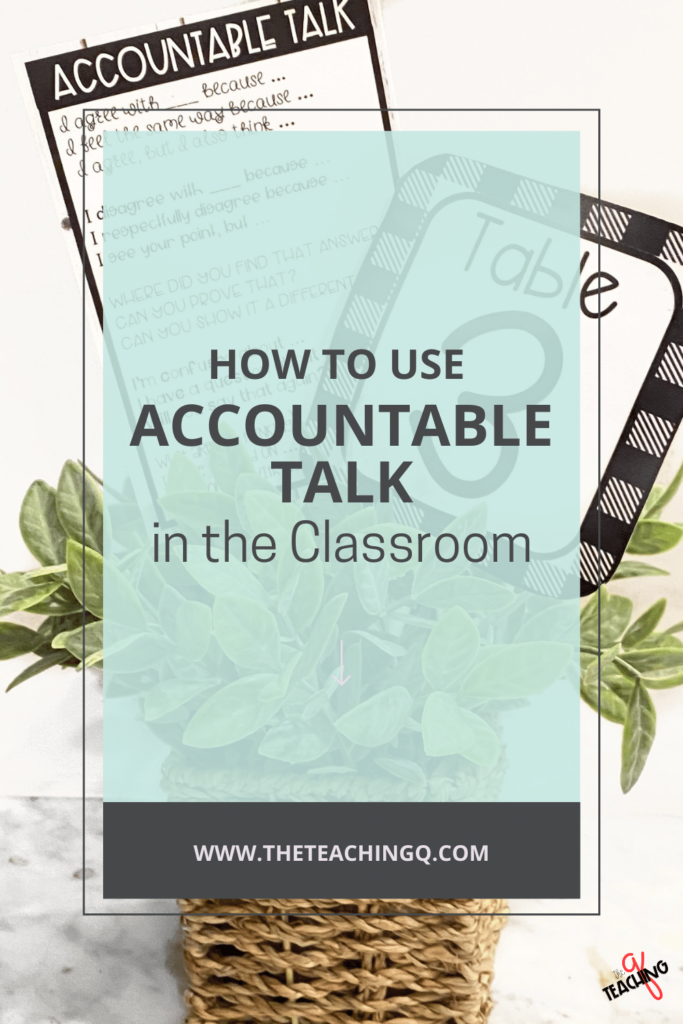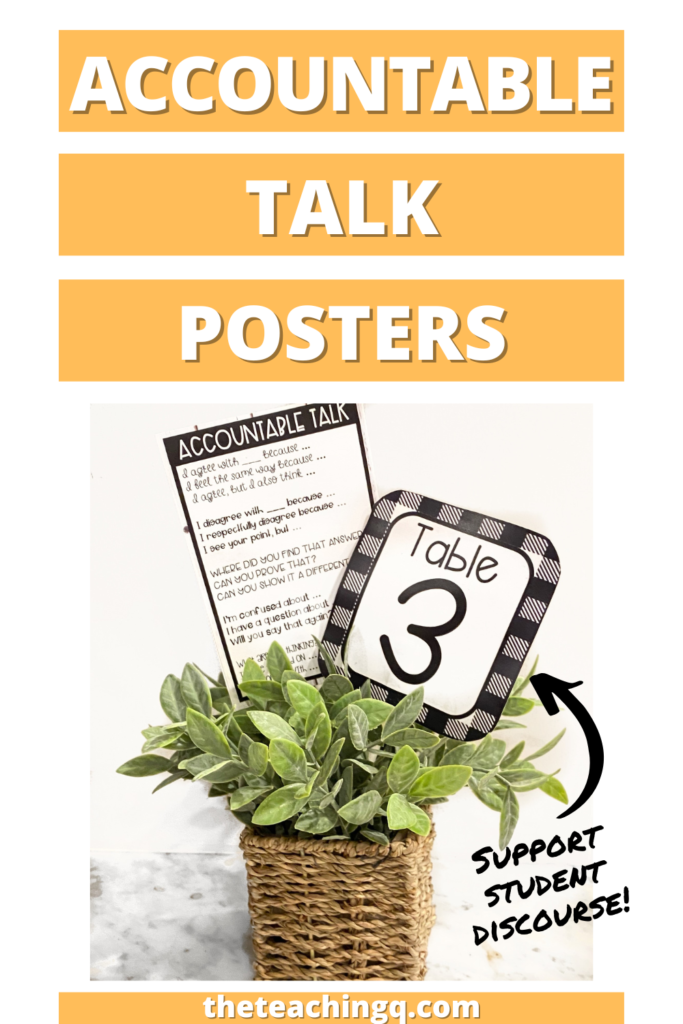When it comes to academic conversations, there is one key ingredient that can make or break their success: accountable talk.
Accountable talk, also known as academic discourse, is a way of speaking and interacting that allows all students to participate in meaningful discussions. It encourages students to share their ideas and respond to the ideas of others respectfully.
When Accountable Talk is used in the classroom, it can help students to:
- Develop and articulate their ideas
- Listen to and understand the ideas of others
- Generate new ideas together
- Critique and evaluate ideas
- Solve problems together
When we talk about accountable talk in the classroom, I’m referring to a respectful, factual, and clear way of speaking. It is a communication method that requires all students to take responsibility for their learning.
Accountable talk has improved student achievement, increased engagement, and promoted a positive classroom community.
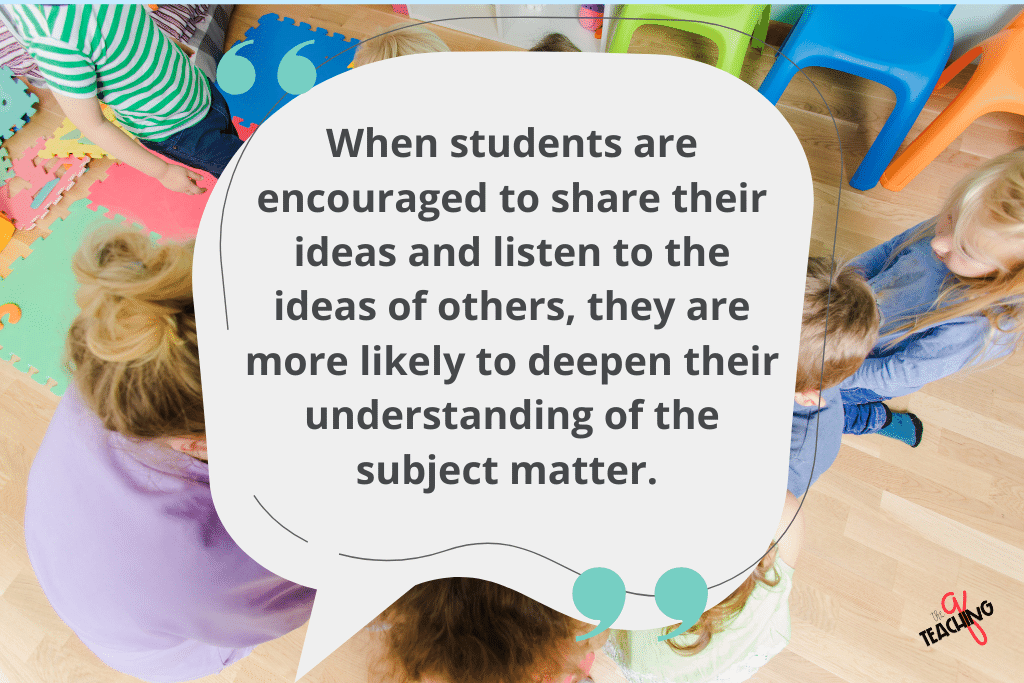
Improving student achievement with Accountable Talk
One of the benefits of accountable talk is that it has been shown to improve student achievement. When students are encouraged to share their ideas and listen to the ideas of others, they are more likely to deepen their understanding of the subject matter.
In addition, accountable talk can help students to identify gaps in their understanding and address them. As students discuss their ideas with others, they may realize some parts of the material they do not fully understand.
This can motivate them to reread or re-watch the lesson to fill in these gaps in their understanding. In this way, accountable talk can help students improve their reading comprehension.
Increasing Student Engagement with Academic Language
Another benefit of accountable talk is that it increases student engagement. Students who feel like their ideas are valued and can share their thoughts with others are more likely to engage in the material.
In addition, when students can listen to the ideas of others, they are more likely to be engaged in the discussion. This is because they can hear different perspectives and learn from them.
Accountable talk is an essential communication tool that can be used to improve student achievement and engagement.

A Positive Classroom Community through Language
One of the benefits of accountable talk is that it can help to create a more positive classroom community. When students feel like they are part of a community where they can share their ideas, they are more likely to be engaged in the material and invested in their own learning.
In addition, accountable talk can help to build relationships between students. When students feel like they can trust and respect their classmates, they are more likely to invest in their learning.
Creating a positive classroom community is essential to creating a positive learning environment.
Accountable talk is an important communication tool that can be used to improve student achievement, increase engagement, and promote a positive classroom community. When used correctly, it can help students to succeed in the classroom and beyond.
Sentence Starters for Academic Discourse
One way to encourage and strengthen academic language is to use sentence starters. These are phrases that help to prompt students to share their ideas. For example, a sentence starter could be “I think that…” or “I noticed that…”.
Using sentence starters can help to encourage students to share their ideas and listen to the ideas of others. It can also help students to identify gaps in their understanding and address them. As students discuss their ideas with others, they may realize some parts of the material they do not fully understand.
This can motivate them to reread or re-watch the lesson to fill in these gaps in their understanding. In this way, academic discourse can help students improve their comprehension of the material.
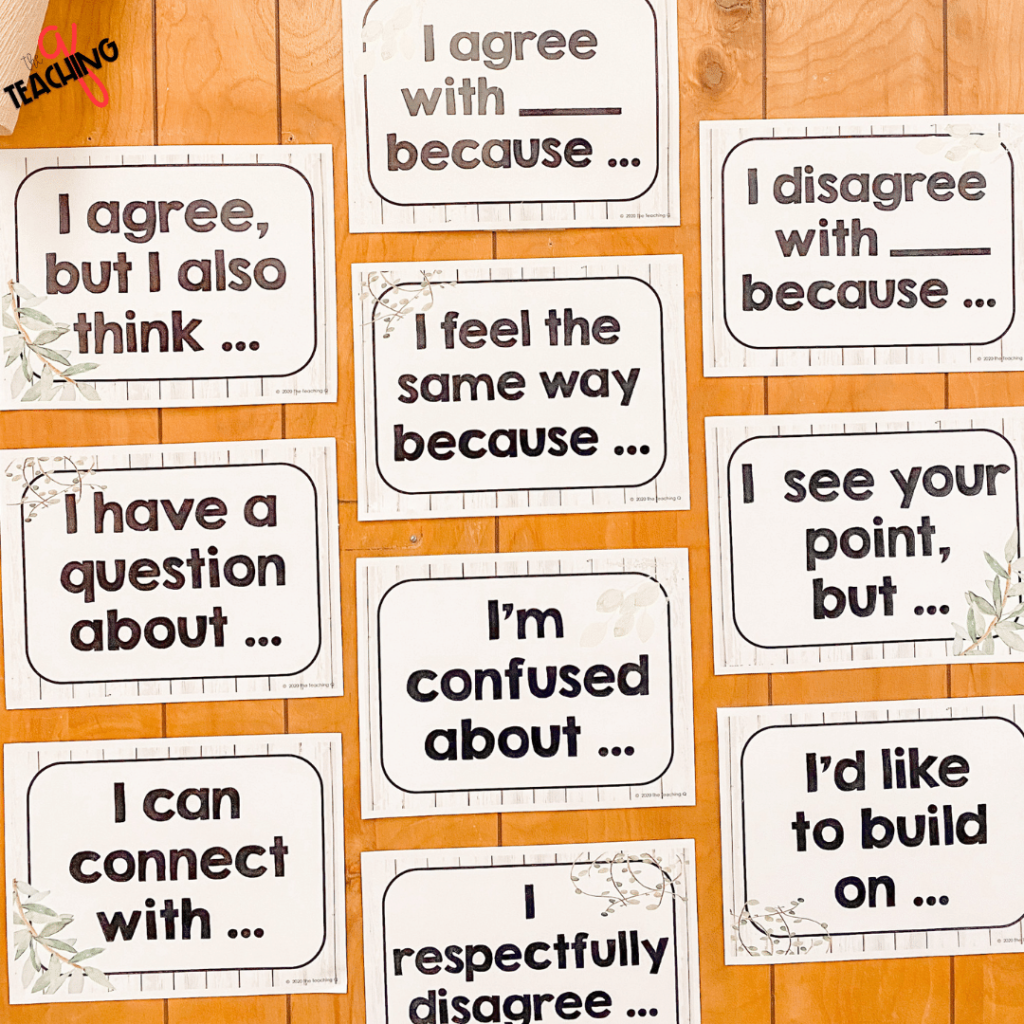
Examples of Accountable Talk Stems
Some example sentence stems that can be used in the classroom include:
- I agree with you because …
- I feel the same way because …
- I agree, but I also think …
- I disagree with you because …
- I respectfully disagree …
- I see your point, but …
- Where did you find that answer?
- Can you prove that?
- Can you show it a different way?
- I’m confused about …
- I have a question about …
- Will you say that again?
- What are you thinking?
- I’d like to build on …
- I can connect with …
If you’d like to add visuals to your classroom displays, you can pick up a set of classroom posters here.
By using accountable talk sentence stems in the classroom, teachers can create an environment where all students feel valued and respected and where everyone has an opportunity to share their ideas.
Justifying Answers with Accountable Talk
When students are asked to justify their answers, they use accountable talk. This type of talk encourages students to share their ideas and listen to the ideas of others. It also helps students to identify gaps in their understanding and address them. As students discuss their ideas with others, they may realize some parts of the material they do not fully understand.
When asking students to justify, it is important to create a safe and respectful environment where all students feel valued. This can be done by using positive and affirming language, as well as by active listening.
Asking Questions with Accountable Talk
When students are encouraged to ask questions, they use academic discourse. This type of talk encourages students to share their ideas and listen to the ideas of others. It also helps students to identify gaps in their understanding and address them.
Asking questions is a key part of accountable talk. By asking questions, students can clarify their understanding of the material. They can also check to see if they are on the right track with their thinking.
When students communicate with one another, it is important to create a safe and respectful environment where all students feel valued. This can be done by using positive and affirming language, as well as by active listening.
By using accountable talk in the classroom, teachers can create an environment where all students feel valued and respected and everyone has an opportunity to share their ideas.
Teacher Tips
Providing opportunities for all students to share their ideas is also important. This can be done by calling on students randomly or asking them to volunteer their ideas.
Finally, it is important to give students time to think about and respond to the ideas of others. This can be done by pausing after a student has spoken or asking follow-up questions.
By using accountable talk in the classroom, teachers can create an environment where all students feel valued and respected and everyone has an opportunity to share their ideas.
Providing opportunities for all students to share their ideas is also important. This can be done by calling on students randomly or asking them to volunteer their ideas.
Finally, it is important to give students time to think about and respond to the questions of others. This can be done by pausing after a student has spoken or asking follow-up questions.
Academic Discourse Wrap-Up
An accountable Talk is a powerful tool that can be used to improve student achievement, increase engagement, and promote a positive classroom community. By using academic sentence stems in the classroom, we are setting our students up for success.
For more information on Accountable Talk, please see the following articles:
- 3 Powerful Writing Strategies to Boost Engagement
- Using Accountable Talk in the Classroom (Edutopia)
- Respectful Talk (Teaching Channel)
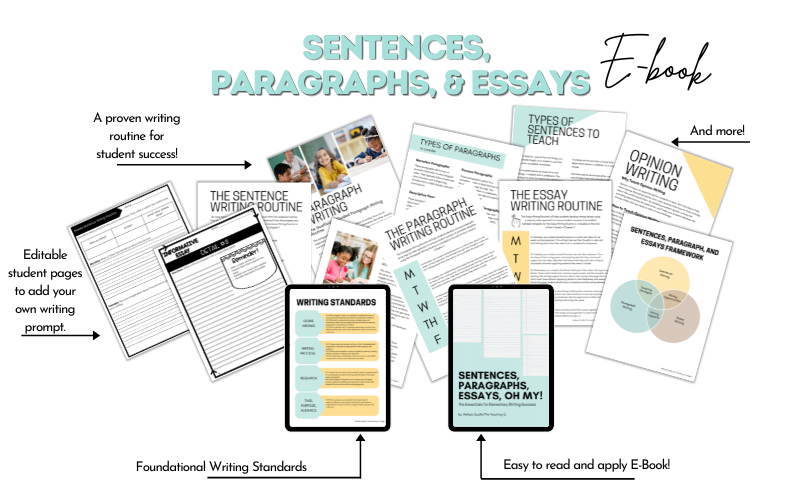
Are your students struggling and making very little progress in writing? Or maybe they’re unmotivated or a reluctant writer? If so, I’ve got your back.
Yes…I…Do!
Let me share my secret sauce when it comes to teaching writing to elementary students.
It’s the Sentences, Paragraphs, and Essays: OH, MY! E-book.
Click this link to learn more about how the E-Book can transform your students’ chicken scratch, hap-hazard writing into strong, effective, glorious writing!
–Melissa
